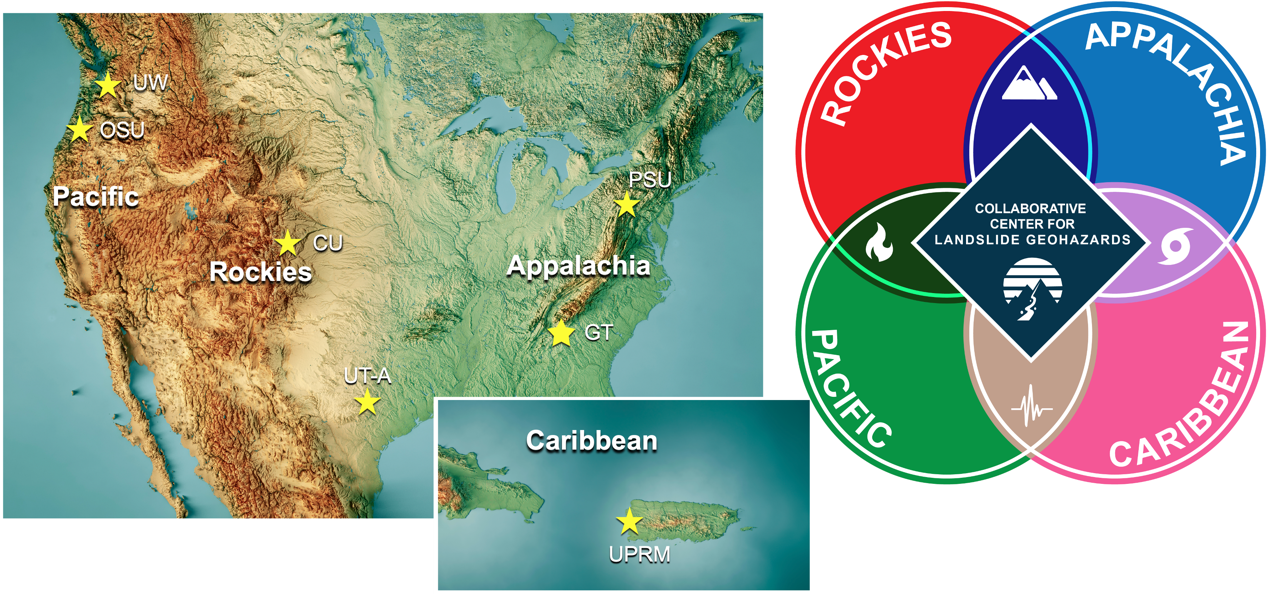
The US Rocky Mountain Region stretches from east of the Sierra Nevada and Cascade ranges to the western High Plains. The Rocky Mountains themselves were born during the Cretaceous to Eocene Laramide Orogeny, and subsequently modified by mid-Cenozoic volcanism and continental rifting, alongside broad-wavelength epeirogenic uplift of uncertain timing. The Rockies host a wide variety of lithologies, from high-grade, erosion-resistant metamorphic rocks to weak volcaniclastic and poorly consolidated sedimentary units.
Landsliding and mass movements of various forms are frequent throughout the Rockies. Debris flows are common, especially in the aftermath of wildfires (e.g., Rengers et al., 2020), which reduce soil infiltration capacity and tree-root cohesion. Steep rocky slopes often spawn rockfalls and rockslides (e.g., Santi et al., 2009), particularly along the precipitous flanks of formerly glaciated valleys (e.g., Tranel and Strow, 2017; Morriss et al., 2023) and along caprock-supported cliffs (e.g., McCarroll et al., 2021). Areas of weak geologic material sometimes host slow-moving earthflows, such as the famous Slumgullion Earthflow in the San Juan Mountains of Colorado (e.g., Coe et al., 2003; Hu et al., 2020). Highways and rail lines across the mountains are vulnerable to mass wasting events. For example, debris flows in summer 2021 forced a prolonged closure of US interstate 70, one of the nation’s major east-west transport routes.
With low regional seismicity, most landslide events in the Rocky Mountain west are triggered by meteorological events. Convective rainstorms are common triggers for landslides and debris flows. In 1999 for example, a series of convective storms over the Colorado Front Range kicked off numerous debris flows across the region (Godt and Coe, 2007). Frontal storms contribute as well, as evidenced for instance by widespread landsliding triggered by a major storm in 2013 (Coe et al., 2014; Anderson et al., 2015). An intriguing feature of landsliding in the Rockies is evidence for aspect dependence, with south-facing slopes appearing more prone to events, perhaps reflecting sparser vegetation cover (Rengers et al., 2016).
